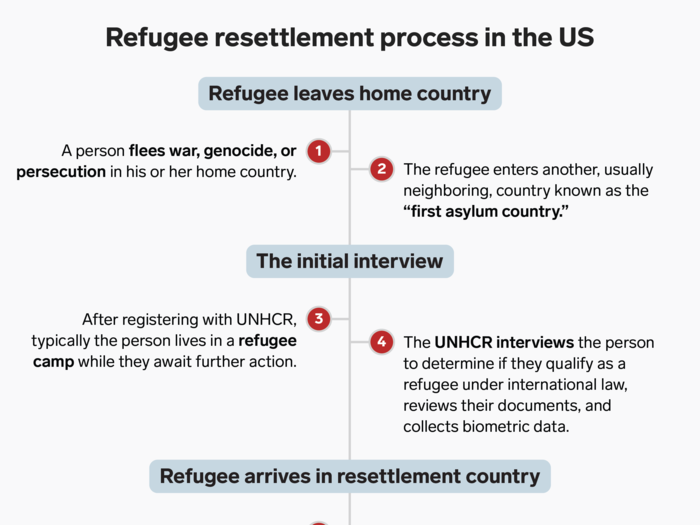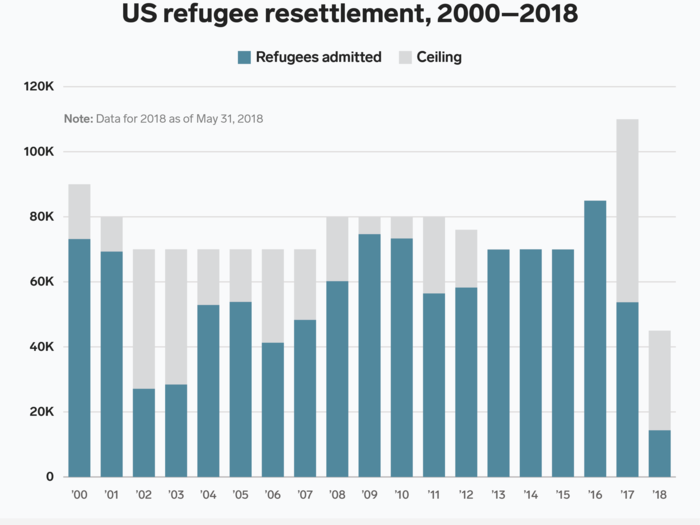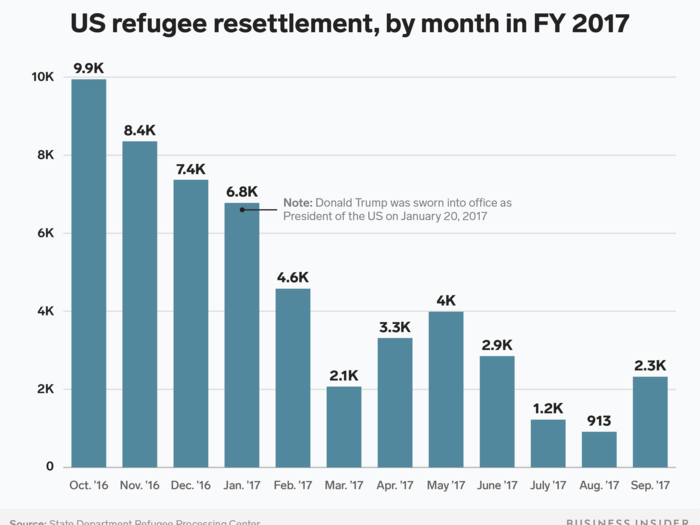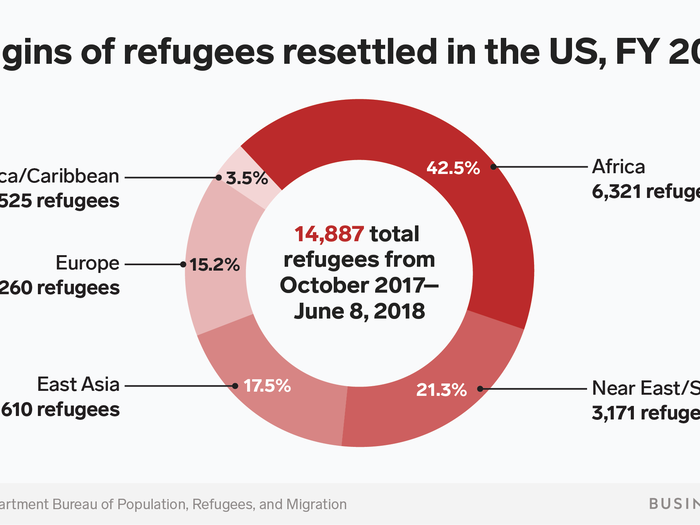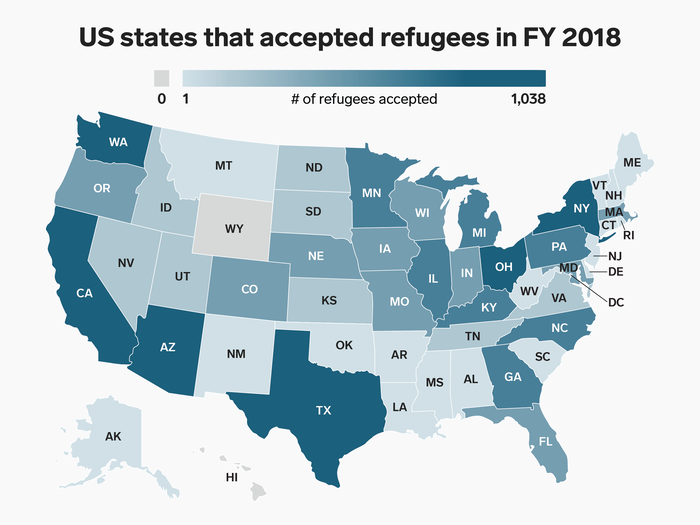The United States is one of 37 countries that offer resettlement programs, though refugees don’t get to pick where they’re sent. Instead, the UNHCR assigns them to the US. Then, they undergo a rigorous, years-long screening process by US officials. Here's how that works:
President Donald Trump has dramatically restricted America's refugee intake since he took office, and though he has demanded that "extreme vetting" be implemented for refugees coming from majority-Muslim countries, those closest to the refugee-vetting process say the current system is already as extreme as it gets.
The refugees undergo years of screening filled with intensive interviews, detailed background checks from multiple government agencies, biometric data collection, medical tests, and constant scrutiny from the US officials who vet them.
Sources: UNHCR, Business Insider
Trump has dramatically reduced both the number of refugees the US can admit annually — known as the "ceiling" — and the number it actually ends up admitting. Though former President Barack Obama raised the 2017 refugee citing to 110,000 admissions, Trump took office mid-way through the fiscal year, and barely allowed half that in the country.
In the last 20 or so years, presidents have generally kept the ceiling in the 70,000-range. The Trump administration reduced it to 45,000 for the 2018 fiscal year and has so far admitted just 14,000 refugees.
Source: Business Insider
Throughout the 2017 fiscal year — which started in October 2016 — refugee resettlement in the US plummeted once Trump took office on January 20, 2017. In August of that year, the Trump administration only resettled 913 refugees.
Resettlement organizations in the US have expressed dismay at the Trump administration's reluctance to admit refugees — particularly when so many countries around the world are mired in crises that displace millions of citizens.
Refugee resettlement groups have warned that the reduction in admission levels would drain their resources and force the shuttering of many programs, making it even harder for the refugees who do arrive in the US to access any assistance they may need.
Source: Business Insider
Under the Trump administration, refugees who are permitted to resettle in the US are mostly from African countries.
Despite the often dangerous conditions in central American countries, the US accepted only 525 refugees from Latin America. Those who live in countries rife with gang violence, such as Honduras and El Salvador, seek safety in the US by migrating as asylum-seekers.
Instead of being processed by the UNHCR, the migrants attempt the dangerous journey northward to the US-Mexico border and strive to reach US soil, where they can claim asylum.
Refugees don't get to choose which state they'll be resettled in, either. Though they're free to move around once they arrive, they are generally placed in cities where they either have relatives, or an existing community of refugees or expatriates from their home countries.
Some states are more welcoming to refugees than others. Texas, Ohio, California, and New York are well-known for accepting refugees. States such as Hawaii and Wyoming, however, have accepted zero refugees so far this year.
Source: Pew Research Center


